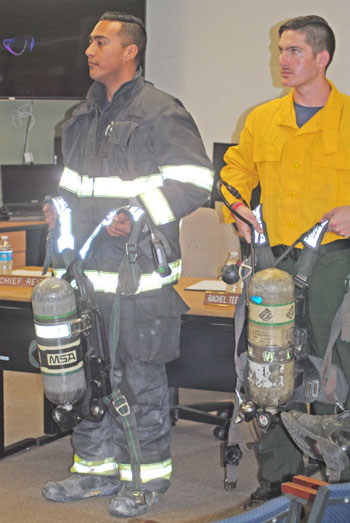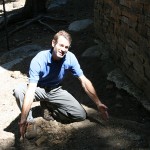
“The community loves the department, “ said Idyllwild Fire Protection District Commissioner Rhonda Andrewson at the end of the commission’s workshop to discuss a parcel fee and tax measure last week. “We are all in agreement we want and need a measure.”
Commission President Jerry Buchanan then directed the fire staff, Chief Patrick Reitz and Assistant Chief Mark LaMont to develop a proposed measure for the commission’s review at a future meeting. The intent is to put the measure, similar to 2016’s Measure W, before voters later this year.
Basically, the proposal doubles the current parcel fee for all IFPD property owners.
The current parcel fee is $32.50 on unimproved parcels within the district. For structures, it begins at $65 annually if the square footage is 3,000 or less. It grows in increments of $32.50 until structures greater than 38,000 square feet pay a $260 fee.
It was initially approved in April 1981. The $65 cap was not imposed until 2006, but the fee has not been raised for inflation or increasing costs during this period.
Buchanan questioned the fairness of imposing only $32.50 on unimproved properties since the department sends the same level of resources to a fire on these lots as for a burning structure. He suggested raising the fee for unimproved parcels, of which there are 874 within IFPD, to $65.
However, LaMont argued that would be a substantial change in the fee formula and require a more intense defense of the fee increase.
LaMont estimated that the new fee would raise about $230,000 annually, or twice the current parcel fee revenue.
With the added revenue, Reitz and LaMont said the district could proceed with its capital improvement plan, fill two vacancies and raise salaries for staff, which were decreased 7 percent in February 2012, when revenues fell precipitously.
The CIP anticipates replacing several engines, perhaps the ladder truck, utility vehicles and other equipment, over the next five to six years.
Without a parcel fee increase, but fully funding the CIP, would result in a $132,000 deficit over the next six fiscal years. However, IFPD has some reserves to offset the total by about $100,000.
If the fee doubling were approved, IFPD would end the same period with an another $560,000 for reserves, based on staff estimates.
IFPD has not had a budget deficit for several years. However, Reitz and LaMont emphasized that was because of the mutual aid revenue IFPD earns for going to fires outside the district. If the number of mutual aid incidents declined, IFPD might encounter a budget issue, they argued.
LaMont also discussed how the cost of equipment from fire protection gear, helmets and breathing apparatuses has substantially increased. Some pieces are four or five times what they were in 1981.
The fee increase requires approval of two-thirds of the registered voters casting a ballot. In 2011 and 2016, a similar fee increase was defeated. In 2011, 60 percent of voters opposed it. In 2016, 57 percent supported it, but shy of the two-thirds requirement for approval.
In the November 2018 general election, 1,778 voters were registered in IFPD and 1,462 or 82 percent cast a ballot in the commissioner race. All four candidates, including incumbents Ralph Hoetger, Henry Sawicki and Andrewson, announced support for raising the district’s revenues.
The commission and staff will use its service data, such as a response time of less than three minutes for medical emergency calls and its integral contributions to the 2013 Mountain and 2018 Cranston fires, to help explain the need for more resources.
In preparation for a measure campaign, the commission also will study the results of a successful tax increase for the Apple Valley Fire Department and an unsuccessful effort in Valley Center.










